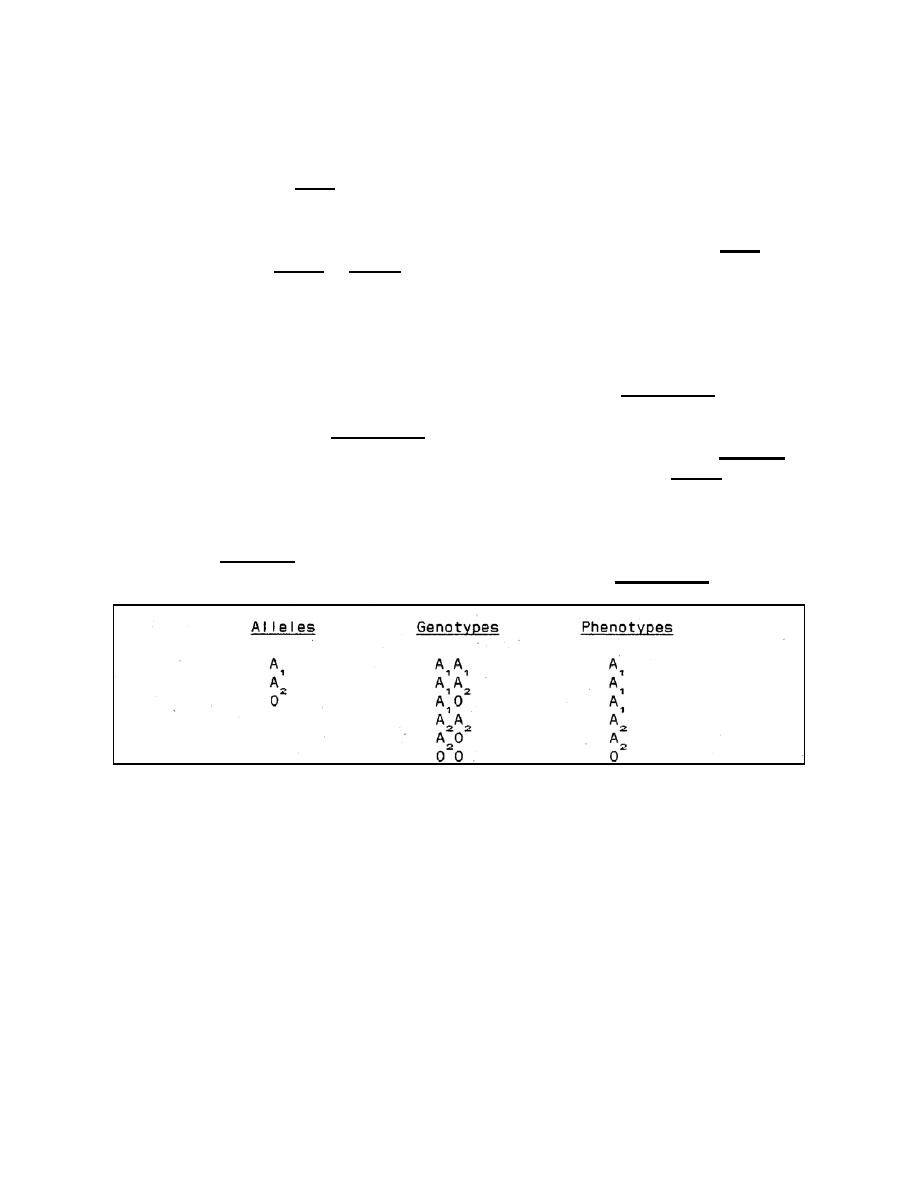
2-4.
DOMINANT AND RECESSIVE TRAITS
a. Genes are responsible for producing the various manifestations of structure
and form which we call traits. A trait which is manifested when the alleles are
heterozygous is called dominant. A recessive trait is revealed only when the
responsible allele is present in double dose (homozygous). It is important to note that
these terms, dominant and recessive, are properly applied in describing only traits.
Their use in labeling genes or alleles is improper. For example, serologically, the A1
antigen, an observable trait, is dominant to the A2 antigen. Given an A1A2 individual,
only the A1 antigen would be detected; while the A2 antigen would not be observed. In
an individual with the genotype A2O, however, the A2 antigen (an observable trait) would
be detected over the product of the O gene.
b. Although in this discussion it has been shown that the observable traits A1,
A2, 0 may be dominant or recessive depending on an individual's genotype, it is
important to realize that the gene action does not demonstrate dominance or
recessivity. In the A1A2 genotype, for example, the A1 gene and the A2 gene produce
their appropriate glycosyltransferase, with subsequent development of BOTH antigens.
The same is true as well of the A2O genotype.
c. In the examples given in Table 2-2, the genetic formulae A1A2 and A2O
constitute the genotype of the individuals. Based on these three alleles only, there are
six possible genotypes. The traits which they determine are called phenotypes.
Table 2-2. Alleles, genotypes, and phenotypes.
d. In most blood group systems, if the allele directly or indirectly determines an
antigen, it will be expressed. The K and k antigens, referred to earlier, are good
examples of antigens determined by allelic genes in which both antigens are
serologically detectable in the heterozygote. Such traits are referred to as co-dominant.
MD0845
2-5


 Previous Page
Previous Page
